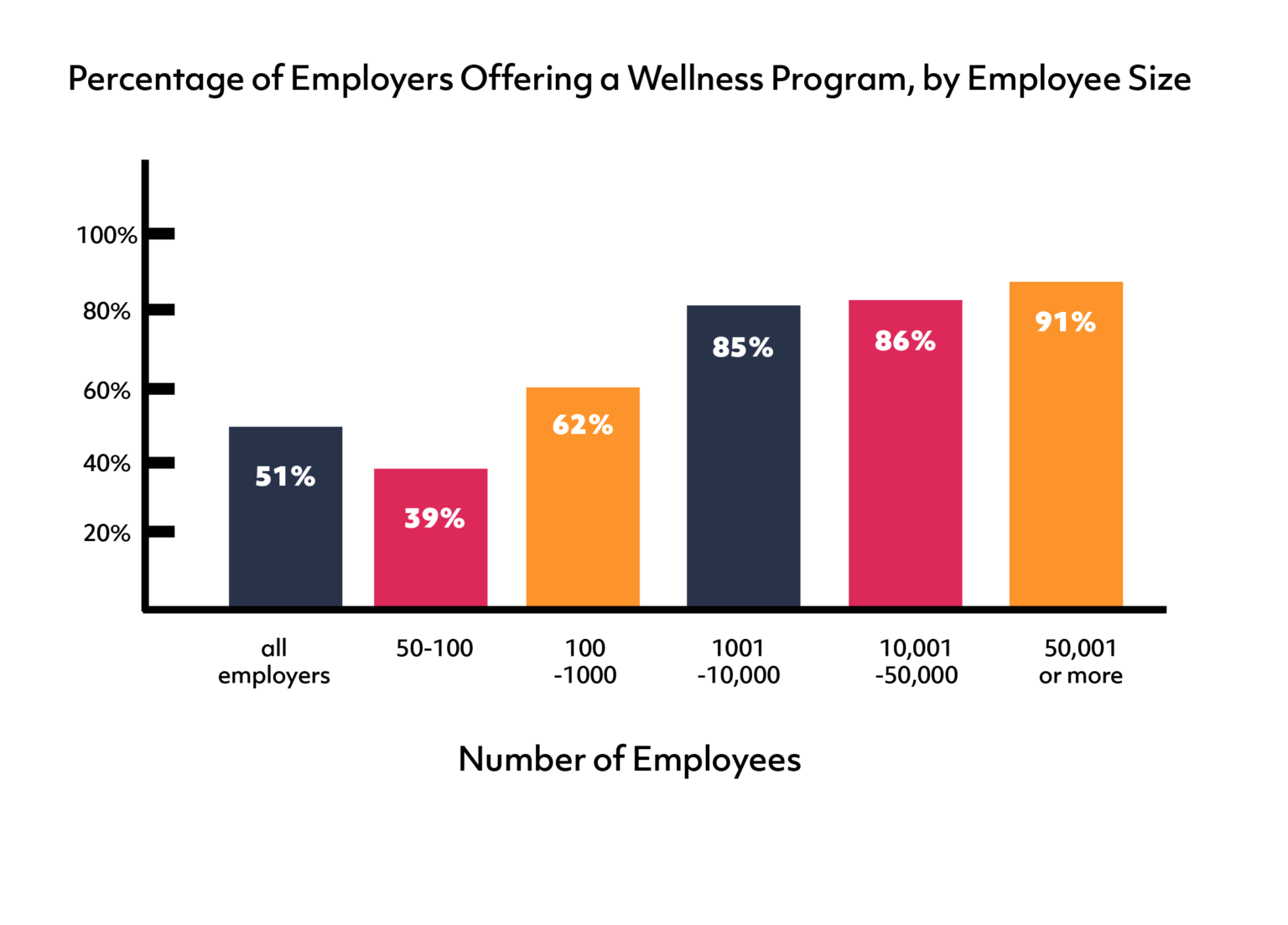At this point in 2023, we’ve all heard of the benefits of improving employee wellbeing. From increased productivity at work to reduce workplace churn, businesses are set to gain a lot from investing in wellbeing services. Yet, how do you actually measure the impact of these services? Wellbeing is, of course, a subjective quality, making it difficult to trace.
Measuring employee wellbeing can initially appear nearly impossible for businesses. Especially for enterprise-style companies with 1000s of employees, how do you plot happiness across an entire organization?
While there are both quantitative and qualitative approaches that measure employee wellbeing, we recommend combining these approaches. In this article, we’ll dive into everything you need to know about how to measure employee wellbeing, including methods and analyzing results.
Let’s dive right in.
How do you measure employee wellbeing?
Employee wellbeing goes beyond just asking someone how they’re feeling that specific day. In the workplace, wellbeing can relate to numerous factors like the amount of work someone has to do, whether they feel supported in their role, and even if they see a future for themselves at the company. Due to the myriad complexities of wellbeing, it’s best to approach this problem from both a quantitative and qualitative approach.
In order to gather both numeric and written data, we suggest using a wellbeing survey. You can send out an extensive wellbeing survey every three months (or as often as you’d like) in order to plot changes in your organization. These surveys should contain a mixture of both number and written fields, allowing you to gather multiple types of data.
Here’s exactly how you should construct an employee wellbeing survey.
How to create an employee wellbeing survey
Although you want to create a survey that’s long enough to capture lots of information, if you make your survey too long, employees will tire of responding to questions. The sweet spot is around five questions, which will provide you with plenty of data and supporting fields.
Be sure to cover core aspects of employee wellbeing. For example, over 80% of employees worry about their work-life balance, making this a core area to hit.
Typically, you should include:
- One general numeric question: How would you rate your own wellbeing at work over the past X months?
- One specific question about working structures: How would you rank the level of support that your manager has offered to you over the past X months?
- A follow-up question that allows for a written response: Explain your score and why you’ve chosen that number.
- A second specific question about work-life balance: How would you rate your work-life balance, with 10 being perfect and 1 being unstable?
- A follow-up question: What could the company do to improve your work-life balance?
- A final general question: How satisfied are you at work on a scale from 1-10?
- A follow-up question: What could the company do to increase your satisfaction with work?
These questions give a broad oversight into every area of a worker’s role. It will inform your business about their relationship with their manager, how stressed they’re feeling, how motivated they feel, and if they are satisfied at work.
How to use employee wellbeing survey results
Once you collect data from your employees, you’ll have a range of useful insights to make use of. We suggest you start with the numerical data, as this is much easier to structure and organize into visualizations.
For each question, your business should create an employee average. Beyond that, you can even create department-wide averages or team averages if you’re looking for a greater degree of insight. Over time, plotting these figures will allow you to trace how employee wellness is changing in your business.
However, in order to actually improve employee wellness, you need to look at the text responses that your employees have given. There are two ways you can do this. You can either comb through the data manually, picking out core ideas, areas of improvement, and suggestions. This first manual method is more time intensive but will allow you to see which ideas repeatedly crop up.
Alternatively, you can use a Natural Language Processing (NLP) Tool. NLP tools have become more popular in recent years, with the increased use of AI and ML technologies making them more accessible to businesses. An NLP tool will naturally comb through your survey responses and find the insights that you’re looking for.
Whether you opt for the AI or manual approach, you will be able to measure employee wellbeing in more than just a sliding scale. You’ll have a detailed set of ideas and recommendations that you can then make to improve how your employees feel at and about work.
Improving workplace culture through feedback
Creating an employee wellbeing initiative is the first step to holistically improving your organization. By acting on the results of the qualitative side of your investigation, you’ll be able to find action areas where you can improve on.
At present, more and more businesses are integrating wellness programs, with measuring employee satisfaction and mental wellbeing being the first step toward success.
 By acting on your results and making a commitment to improve the areas that employees are struggling with, you’ll be able to continuously improve employee wellbeing in your organization. Over time, the actionable changes you make will begin to reflect across all your survey data.
By acting on your results and making a commitment to improve the areas that employees are struggling with, you’ll be able to continuously improve employee wellbeing in your organization. Over time, the actionable changes you make will begin to reflect across all your survey data.
Final Thoughts
Measuring employee wellbeing with quantitative and qualitative approaches will give your business an in-depth look at how your workforce feels. Quantitative survey results will give you a definitive score on a happiness index, allowing you to plot mass improvements over time. Similarly, qualitative approaches will offer you more insights into the factors that impact employee wellness, allowing you to remedy pain points and boost wellness holistically.
By combining these approaches through the use of quarterly surveys, your business will be able to create an extensive bank of employee wellness data. Beyond just plotting changes over time, this will map the steps you need to take to improve overall employee wellness. Measuring employee wellness is only the first step – next, businesses should take action and put their workers first.

